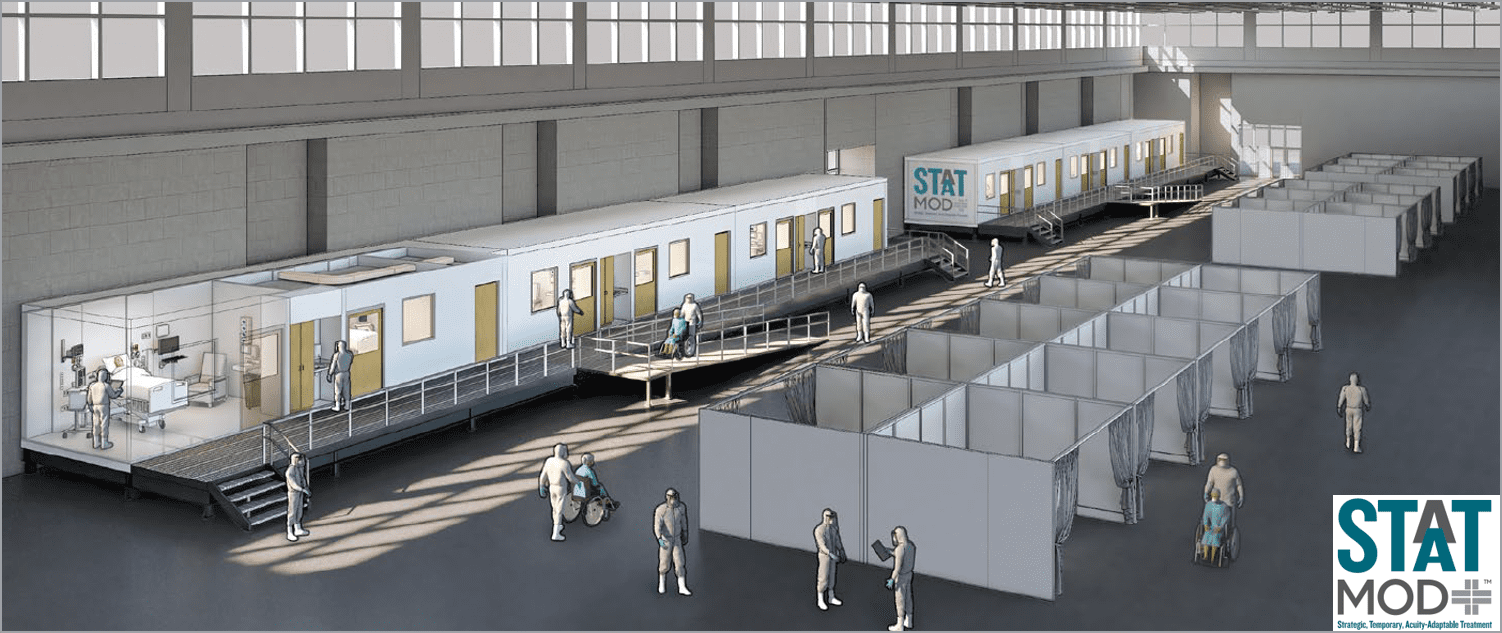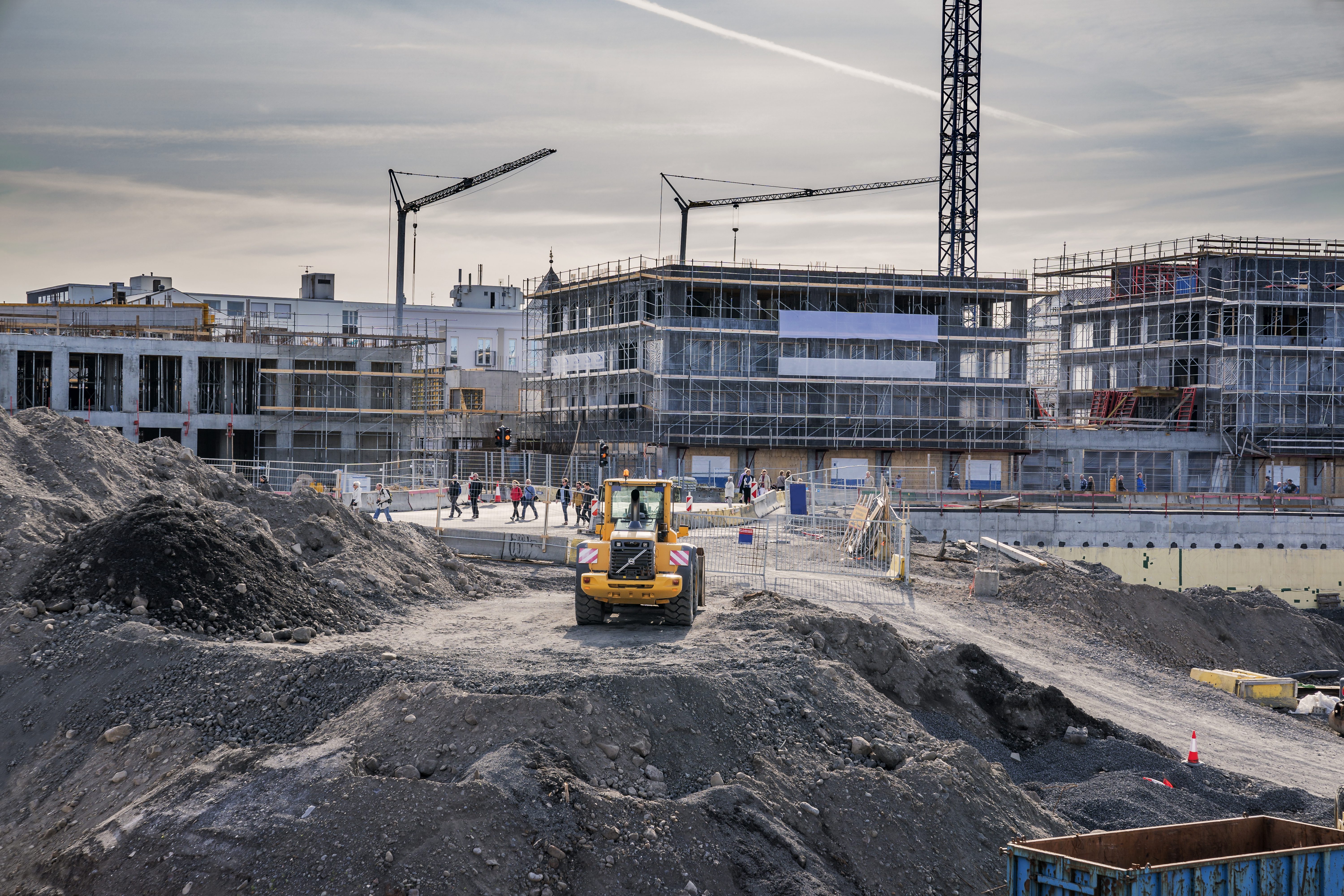As we emerge from this unprecedented global crisis, it is useful to reflect upon how we can build a more resilient and sustainable future for our planet. During this pandemic, I have noted the importance of cross-sector partnerships in tackling COVID-19. Such partnerships have shown that it is possible to implement concrete actions rapidly and effectively, where previously it may have taken months or years of planning. In this post-COVID world, we need to use this same power of collaboration in our common battle against climate change.
A global effort for a global health emergency
The COVID-19 crisis has highlighted the disparities in terms of healthcare readiness across the globe, with hospitals ramping up capacity as best they can, to cope with the massive and unexpected influx of patients. From medical tents to pre-fabricated Intensive Care Units (ICU), the rapid deployment of such essential health infrastructure has been critical in the response to this unprecedented challenge.
Take the recent CURA initiative, for example. Conceived by Italian architect Carlo Ratti, this innovative healthcare solution is based on the concept of re-purposing shipping containers into easy-to-assemble mobile ICUs for COVID-19 patients.
The backbone of these emergency mobile ICUs is electricity, which provides the lifeline for these mission-critical facilities. My team at Schneider Electric had the great honor to partner in this innovative project and I witnessed first-hand how the power of global collaboration was able to make this design fully scalable. In addition to our design contribution, I set up a task force to help turn this concept into a reality. The mandate for the team was simple: to produce and deploy a critical power infrastructure for CURA’s mobile ICUs, in just two weeks.
From the beginning, this project faced many potential hurdles – such as lockdowns and supply chain disruptions in many parts of the world. However, these challenges simply forced us to come up with new ways to realize our vision. Thanks to our global supply chain platform and a network of long-term partners across the world, our team was able to create a global sourcing and manufacturing plan to help us to build these ICUs in less than four weeks, absolutely anywhere in the world.
Hospitals made from shipping containers could help fight coronavirus
Aside from our collaboration with CURA, I have similarly witnessed the importance of partnerships in other emergency hospital projects where we have been involved.
For example, in the US, we have recently collaborated with our long-term partners to meet the demand for pre-fabricated modular medical STAAT-Mod™ critical care units, which can be deployed as stand-alone hospitals, or be used inside convention centers, arenas, and temporary structures. Designed by Minnesota-based design firm, HGA, the success of this project was thanks to the extensive network of partners, including Faith Technologies and Graybar, to secure and optimize a supply chain network for scaled-up production.

Global cooperation for global climate solutions
The COVID-19 pandemic has accelerated global collaboration at a scale that is unprecedented in our history and has demonstrated that nations and organizations can work together when faced with common challenges that threaten our livelihood. Another bright side is the positive impact it has had on our fragile environment, especially in terms of significant reductions in carbon emissions. According to the International Energy Agency, global CO2 emissions are expected to drop by 8% in 2020 – the largest dip ever recorded.
Yet, without a drastic change in our modes of consumption and production, emissions may rebound, as many economies around the world gradually enter the post-COVID world. We must take this opportunity to apply the lessons learned over the past few months in our common battle against climate change.
The science is clear: the next 10 years are critical in determining whether this battle is won or lost. The industry has the necessary technology to help us succeed in bringing about an all-electric transition to clean energy, and an all-digital approach to delivering scalability and efficiency. The key question is: how to accelerate and at what scale. Business leaders must do more together and collaborate with customers, partners, start-up disruptors, as well as the public sector.
A case in point
The building and construction sectors provide an excellent example of how this would work. Construction-related spending accounts for 13% of global GDP. Construction has a huge carbon footprint: buildings are responsible for 40% of CO2 emissions. Eleven percent of this comes from the manufacture of building materials and products such as steel, cement, and glass. Meanwhile, 10% of these materials go to waste and 30% of construction activities are reworking tasks.

A key reason for such inefficiency is the high-level fragmentation that exists in this sector. The construction industry is made up of many players who are involved at various stages; encompassing functions such as planning, design, construction, and maintenance. As a result, the industry is one of the most fragmented in the world. Traditionally, these silos have been a major roadblock to achieving greater efficiencies.
Moving forward, I remain optimistic, especially given that in recent years, digital platforms have emerged that can drastically facilitate cross-sector collaboration. Take for example, the excellent MTWO platform by RIB Software, which is a single, collaborative platform that eliminates information silos between all stakeholders in the construction and real estate industries.
The CURA initiative perfectly illustrates how global cooperation can lead to real progress. As some countries begin to exit this health crisis, we need to carry that same level of ambition and unity to bring about a resilient and sustainable future. I am confident that modern digital innovations are acting as major catalysts for such collaborations to flourish across industries.
The climate battle cannot be won alone. Let’s act now, together.
This article also appeared on WEF Forum.




Conversation
Great overview and highlighting of how much health care is a key pillar in our economies, societies and the role that the tech sector plays in accelerating the much-needed transformation of our health care systems akin to the standards of the 21st century.
Unfortunately, it needed a global public health crisis to trigger this progress, however as history has shown us many times – crises forge re-imagination.
Thank you Philippe Delorme for that tech-health care partnership. We need more of these broadly spanning joint ventures across sectors.